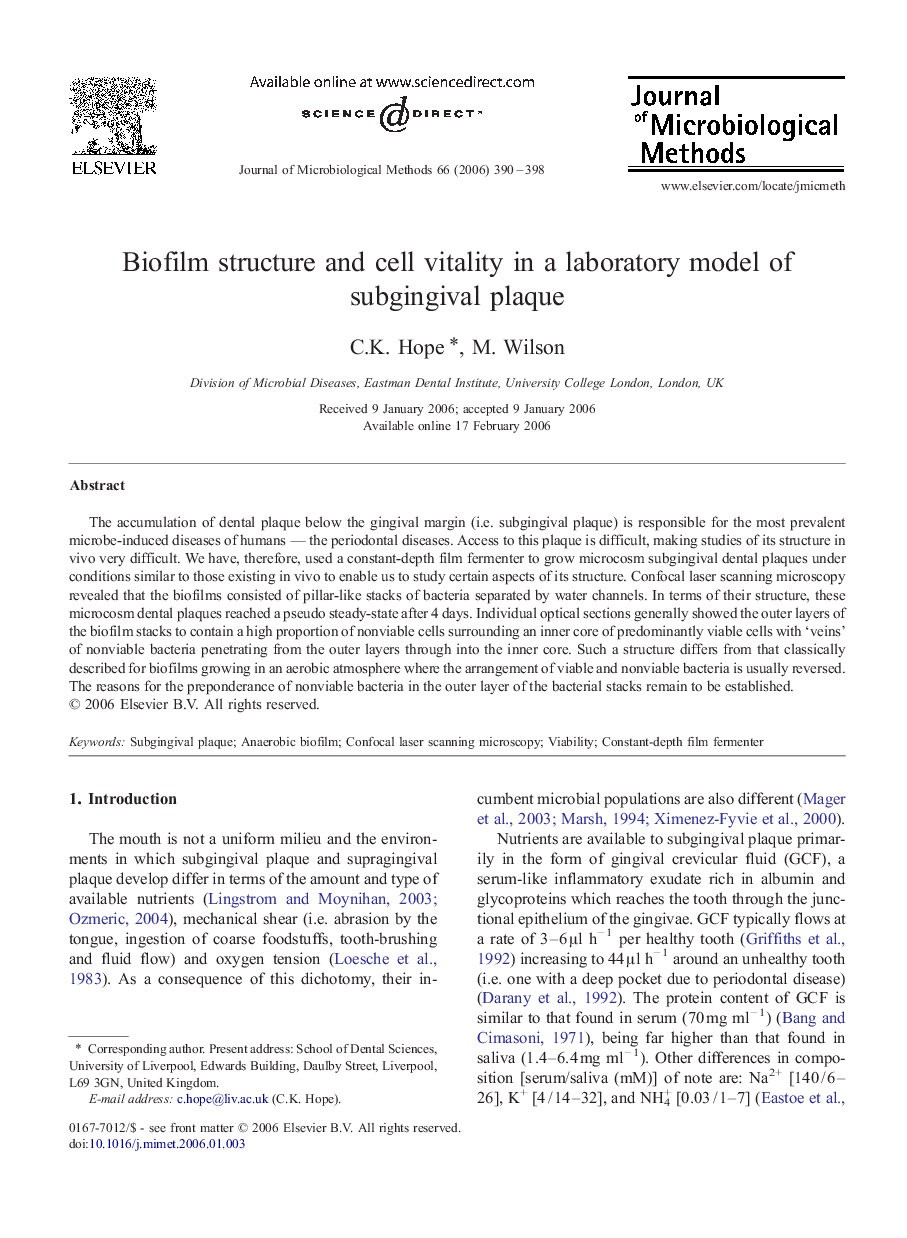| Article ID | Journal | Published Year | Pages | File Type |
|---|---|---|---|---|
| 2091253 | Journal of Microbiological Methods | 2006 | 9 Pages |
The accumulation of dental plaque below the gingival margin (i.e. subgingival plaque) is responsible for the most prevalent microbe-induced diseases of humans — the periodontal diseases. Access to this plaque is difficult, making studies of its structure in vivo very difficult. We have, therefore, used a constant-depth film fermenter to grow microcosm subgingival dental plaques under conditions similar to those existing in vivo to enable us to study certain aspects of its structure. Confocal laser scanning microscopy revealed that the biofilms consisted of pillar-like stacks of bacteria separated by water channels. In terms of their structure, these microcosm dental plaques reached a pseudo steady-state after 4 days. Individual optical sections generally showed the outer layers of the biofilm stacks to contain a high proportion of nonviable cells surrounding an inner core of predominantly viable cells with ‘veins’ of nonviable bacteria penetrating from the outer layers through into the inner core. Such a structure differs from that classically described for biofilms growing in an aerobic atmosphere where the arrangement of viable and nonviable bacteria is usually reversed. The reasons for the preponderance of nonviable bacteria in the outer layer of the bacterial stacks remain to be established.
